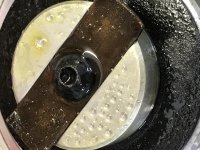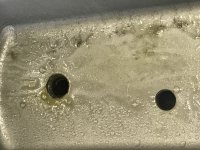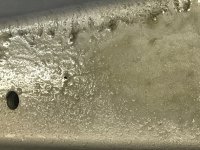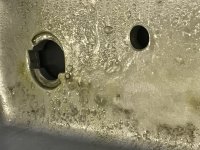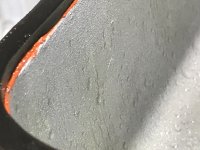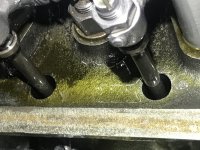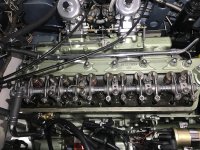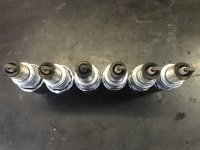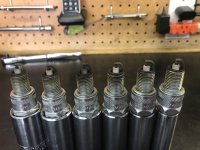WHT
Jedi Hopeful
Offline
Hi Bob,
You make good points.
However, I think the need to retorque cylinder head bolts and nuts also goes back 70 years ago when softer composite head gaskets were common on many car (and boat) engines. Head gasket manufacturers still make older style composite head gaskets for these engines and stationary engines. Below is a section from an engine building forum discussing rebuilding older engines:
"It appears the idea of retorquing head bolts originated "back in the day" when softer composite head gaskets were commonplace.
After being torqued down these gaskets would tend to "settle" a bit; this made retorquing them a good idea to prevent seepage and other issues. Modern head gaskets don't have this issue and as such don't require retorquing. After all, when you buy a new car you don’t have to bring it back to the dealership after 200 miles to have the head bolts retorqued.
The best way to know for sure is to read the head gasket manufacturer instructions. It they don't specifically tell you to retorque the head fasteners then don't. If you feel the need to retorque your head bolts or studs then follow the same pattern as you did when you initially torqued them down, do one at a time, and, especially with aluminum heads, we would advise doing it on a cool engine."
Regarding 'torque-to-yield' cylinder studs/bolts, they really were not used very much in the 1950s and 1960s. They are a more recent development when aluminum heads became common on iron blocks and the cylinder studs and bolts had to deal with greater and unequal thermal expansion due to the dissimilar materials. Bolted head and block assemblies now moved against each other producing greater shear forces on the head gasket..
Regarding using a modified crow foot spanner to torque head bolts and nuts, there is a simple mathematical formula to adjust the torque applied to a crow-foot wrench to match required head bolt torque specifications. Its just easier if the crow-foot is aligned with the drive as was the Britool 18G545 spanner.
Lastly, be careful using washers between the cylinder stud nut and the block. ARP discovered people were damaging their cylinder head studs and engine blocks a few years ago when using between the nut and headwashers. They issued a technical paper discussing the problem:
"An engine builder was torquing the head bolts on his engine (the torque spec called for 70 lb-ft of torque). But something was definitely not right and he could feel it in the torque wrench. As he applied over 60 lb-ft of torque, the resistance in the torque wrench felt like either the stud was failing or the threads were pulling out of the block.
Here’s what ARP has discovered. What he felt when he reached the point where the torque wrench felt like the bolt was stretching was really the head stud washer beginning to turn – and therefore reducing the friction. He had enough experience to know that because it didn’t feel right, he should stop applying additional torque before more damage was done.
He experienced the problem because the washer between the nut and head began to rotate slightly. This effectively turned the washer into a bearing, reducing friction. If a spinning washer reduces the friction by even a third, it applies another 10- to 15-percent of torque into stretching the bolt, and this radically increases the actual torque applied to the bolt. This additional torque fails the bolt by stretching it beyond its yield strength or pulling the threads out of the block. Both of these are situations best to avoid.
The solution was to polish the washer surface next to the head nut and rough the surface next to the block."
Regards, Bill
You make good points.
However, I think the need to retorque cylinder head bolts and nuts also goes back 70 years ago when softer composite head gaskets were common on many car (and boat) engines. Head gasket manufacturers still make older style composite head gaskets for these engines and stationary engines. Below is a section from an engine building forum discussing rebuilding older engines:
"It appears the idea of retorquing head bolts originated "back in the day" when softer composite head gaskets were commonplace.
After being torqued down these gaskets would tend to "settle" a bit; this made retorquing them a good idea to prevent seepage and other issues. Modern head gaskets don't have this issue and as such don't require retorquing. After all, when you buy a new car you don’t have to bring it back to the dealership after 200 miles to have the head bolts retorqued.
The best way to know for sure is to read the head gasket manufacturer instructions. It they don't specifically tell you to retorque the head fasteners then don't. If you feel the need to retorque your head bolts or studs then follow the same pattern as you did when you initially torqued them down, do one at a time, and, especially with aluminum heads, we would advise doing it on a cool engine."
Regarding 'torque-to-yield' cylinder studs/bolts, they really were not used very much in the 1950s and 1960s. They are a more recent development when aluminum heads became common on iron blocks and the cylinder studs and bolts had to deal with greater and unequal thermal expansion due to the dissimilar materials. Bolted head and block assemblies now moved against each other producing greater shear forces on the head gasket..
Regarding using a modified crow foot spanner to torque head bolts and nuts, there is a simple mathematical formula to adjust the torque applied to a crow-foot wrench to match required head bolt torque specifications. Its just easier if the crow-foot is aligned with the drive as was the Britool 18G545 spanner.
Lastly, be careful using washers between the cylinder stud nut and the block. ARP discovered people were damaging their cylinder head studs and engine blocks a few years ago when using between the nut and headwashers. They issued a technical paper discussing the problem:
"An engine builder was torquing the head bolts on his engine (the torque spec called for 70 lb-ft of torque). But something was definitely not right and he could feel it in the torque wrench. As he applied over 60 lb-ft of torque, the resistance in the torque wrench felt like either the stud was failing or the threads were pulling out of the block.
Here’s what ARP has discovered. What he felt when he reached the point where the torque wrench felt like the bolt was stretching was really the head stud washer beginning to turn – and therefore reducing the friction. He had enough experience to know that because it didn’t feel right, he should stop applying additional torque before more damage was done.
He experienced the problem because the washer between the nut and head began to rotate slightly. This effectively turned the washer into a bearing, reducing friction. If a spinning washer reduces the friction by even a third, it applies another 10- to 15-percent of torque into stretching the bolt, and this radically increases the actual torque applied to the bolt. This additional torque fails the bolt by stretching it beyond its yield strength or pulling the threads out of the block. Both of these are situations best to avoid.
The solution was to polish the washer surface next to the head nut and rough the surface next to the block."
Regards, Bill

 Hi Guest!
Hi Guest!

 smilie in place of the real @
smilie in place of the real @
 Pretty Please - add it to our Events forum(s) and add to the calendar! >>
Pretty Please - add it to our Events forum(s) and add to the calendar! >> 

